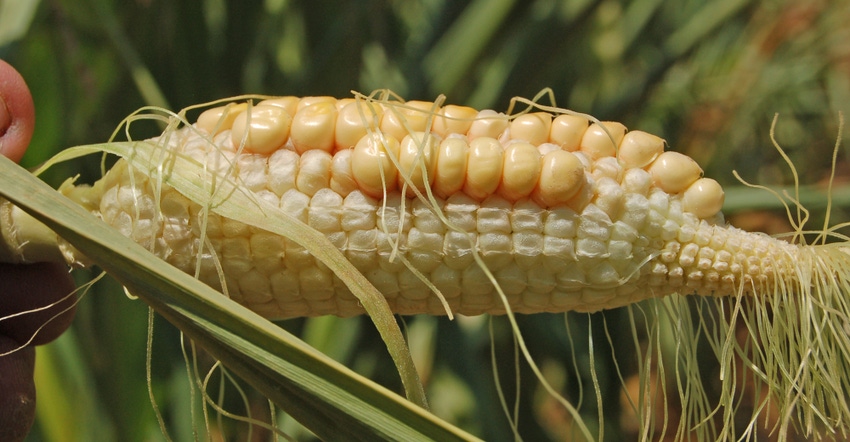
Where would you set a thermostat for maximum daily temperature during corn pollination if you could choose? Corn originated in Mexico. Should you dial it up?
Mark Jeschke, a nationwide agronomy manager with Pioneer, says that heat makes corn grow — to a point. Daily highs during July in Indianapolis; Champaign, Ill.; and Des Moines, Iowa, are higher than where corn originated, and night temperatures are significantly warmer here vs. in Mexico.
“Research indicates that corn yields begin dropping when daily temperatures are above 86 degrees F,” Jeschke says. If it’s hot and corn yields are lower, many people think it’s because of pollination issues.
“That can happen at extremely high temperatures, but it’s rare in the Corn Belt,” he says. “Water stress made worse by heat stress can really send yields into a nosedive.”
Impact of heat stress
The impact of heat stress on corn can be difficult to unpack, Jeschke says. It’s usually accompanied by drought, too. How quickly temperatures change and the duration of hot weather play roles in how much heat stress hurts corn.
Work by earlier researchers indicates that 85% of yield depends on total number of kernels produced per acre. Stress that negatively impacts number of kernels per ear translates into a yield hit. The most critical period for determining yields is the four- to five-week window bracketing silking.
“That’s when kernel number is set,” Jeschke says. “Any stress then will reduce the number of kernels a plant fills. Tip kernels fill last, so they’re the first kernels aborted if the plant can’t fill all kernels on the ear.”
Link to water stress
You may never have heard the phrase “vapor pressure deficit,” but it’s a key factor in determining if weather stresses impact corn yields. VPD is simply the difference between how much water air can hold when it’s saturated with moisture and how much it holds now, Jeschke explains. Higher temperatures create a higher VPD between the inside of a saturated leaf and air outside the leaf. The higher the VPD, the faster water is pulled from the leaf, and the faster it evaporates.
Heat stress also contributes to lower net photosynthesis within the plant, Jeschke says. Other biological factors linked to higher temperatures contribute to less-efficient photosynthesis at temperatures above 86 degrees, too.
What’s the bottom line? “The greatest impact of extreme heat stress on corn likely comes through intensification of water stress rather than the direct effect of heat,” Jeschke says.
Excessive heat affects pollination
Too much heat can interfere with corn pollination, but it may take much higher temperatures than you think to trigger hiccups in the process. Jeschke cites these key tripping points:
Above 90 degrees F. There is documented evidence that prolonged exposure to temperatures above 90 degrees can dramatically reduce pollen germination.
Above 95 degrees F. At this point, pollen production can drop off and silk desiccation can occur, especially if relative humidity is low.
Above 100 degrees F. Purdue University’s Bob Nielsen demonstrated that temperatures this hot can kill pollen.
Saving grace. Pollen shed usually occurs in the morning. On one of the hottest days ever in Des Moines during the drought in 2012, it reached 106 degrees in the afternoon but was only 90 to 95 degrees from 9 to 10 a.m.
About the Author(s)
You May Also Like




